7 ways to protect your plants from sudden frosts
Weather of Arabia - Unexpected frost can quickly destroy crops, and is especially destructive for delicate seedlings that are sensitive to a sudden drop in temperature. Even productive crops can be damaged and become unproductive, and the resulting crop is also damaged, causing great losses to farmers.
What is frost?
Frost is defined as a thin layer of ice that is formed when water vapor changes from a gaseous state to a solid, when it is exposed to temperatures below the freezing point. plant .
The frost that forms when the temperature is between -2 and 0 degrees Celsius is light and does not cause much damage to plants, like the hard frost that forms at temperatures below -2 degrees Celsius.
When do you expect frost?
It is first important to follow the weather and meteorological forecasts that warn of the danger of frost formation. There are some environmental conditions that usually increase the chances of frost formation, namely:
-
Cloudless sky: The chances of frost formation are high on the nights when the sky is clear. The possibility of frost forming on the nights when the sky is overcast is very weak because the clouds preserve the earth’s heat and isolate it from sudden fluctuations in temperature, but the clear sky allows heat. escaping into the atmosphere .
- Calm winds : Quiet conditions with little wind contribute to reaching the freezing point, because the low air movement leads to the non-proliferation of warm air currents on the ground .
- Decreased temperature: The drop in temperature is considered a major cause of frost formation, especially when there is moisture in the air (during fog conditions or when dew forms), which promotes the formation of ice crystals .
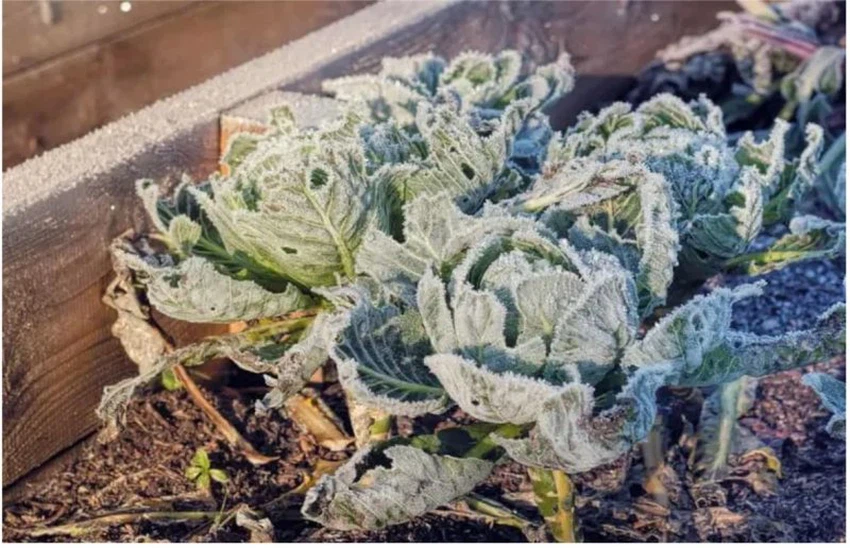
How to protect your plants from frost
Frost can be fatal to agricultural crops, but some care and preparation can make a big difference in protecting sensitive plants from freezing. Here are some helpful tips:
1. Caring for plants in pots and containers :
Plants in pots can be moved to a warm place away from the danger of frost, taking care that the place is not too warm to not expose the plants to a large difference in temperature, and attention should be paid to plants in containers because they are more susceptible to root damage in cold temperatures and during the occurrence Frost, because they do not benefit from the insulating effect of the earth like the plants in the ground, and once the danger of frost in the morning has passed, all plants can be brought back outside.
2. Watering plants in the afternoon :
It may seem counterintuitive, but keeping the soil moist can help protect plants from frost. Moist soil has an insulating effect, keeping the heat of the day and radiating it upward at nightfall. When watering plants before a frost spell, be sure to do it in the middle of the day when The temperatures are still fairly warm .
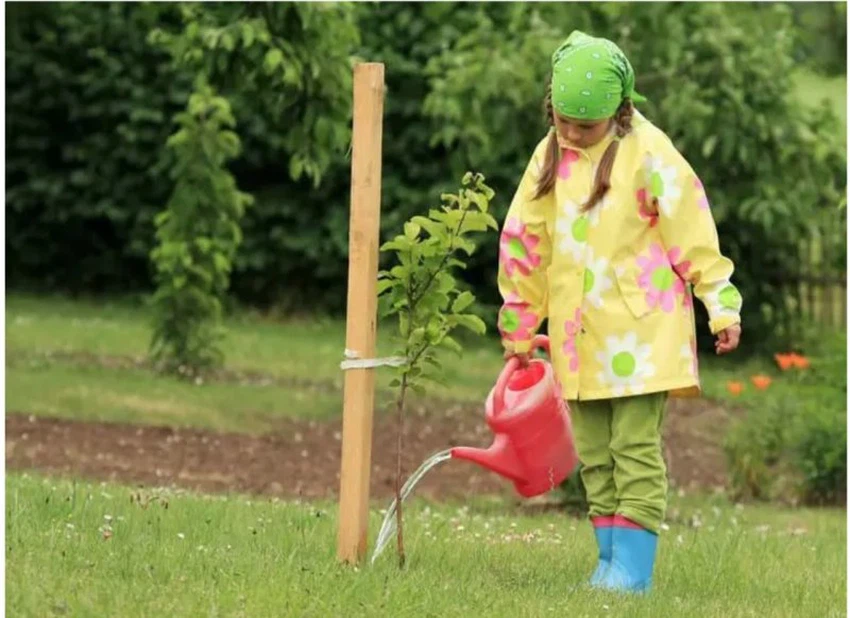
3. Add a thick layer of sawdust :
Adding a layer of mulch around the plantings helps protect the soil from sudden fluctuations in temperature. Straw, wood chips, clay mixed with dry leaves, or even just a pile of dry leaves can be used to provide insulation for the underground plant roots.
The mulch should be dense at a depth of 7 to 15 cm, to form a well-insulated barrier, and holes should be left with a diameter of 3 - 6 cm around the central stem of the plant, so that the warmth of the soil can move up through the plant . Although this is one of the best ways that can be done to keep plants from lowering the temperature, some of this protective cover must be removed when the weather warms up .
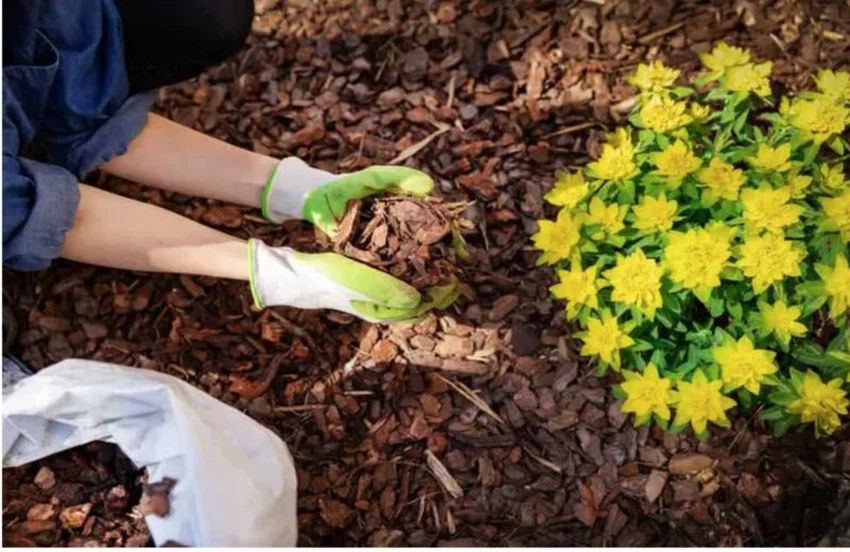
4. Cover individual plants with a shield :
A hedge is a bell-shaped covering made of plastic or glass that helps keep young plants warm and comfortable in cold weather. Plastic containers can be purchased or empty water bottles can be reused.
You can also use many things as an alternative, such as an inverted bucket or flower pot, or the bottoms of plastic jugs can be cut off and placed in the soil . When using covers to prevent frost, they should be placed over the plants just before dark, and uncovered in the morning so that they can benefit from the warmth and rays of the sun.
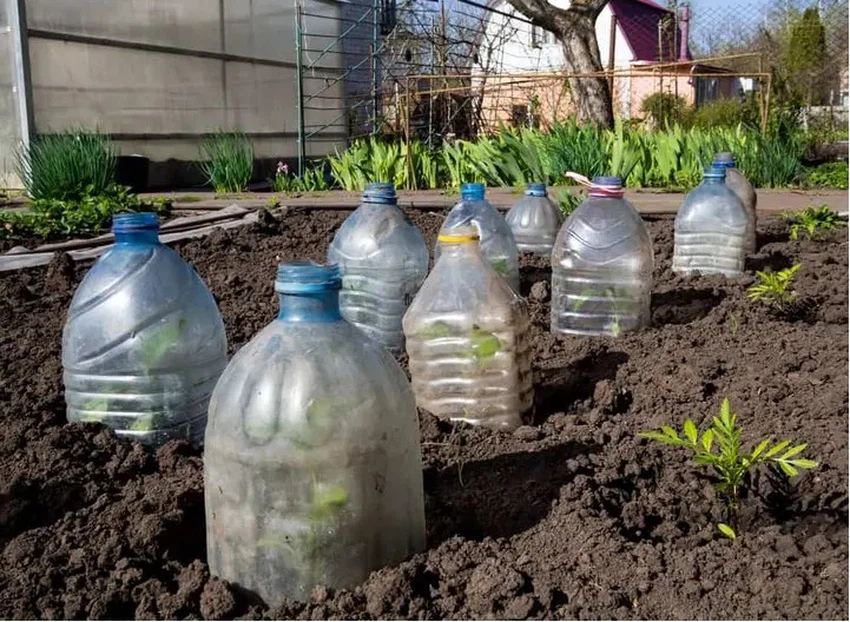
5. Cover the plants with a cloth:
To protect a larger group of plants, they can simply be covered with blankets, bed sheets, towels, or pieces of cloth. Before placing the cloth, several pegs can be placed around the plants so that they form a tent-like structure when covered, reaching up to the soil, being careful not to tie them around the stem or stem of the plant , because this will prevent the heat of the earth from escaping to the plant.
To ensure frost resistance, a final layer of plastic can be added, taking care that no part of the plastic cover comes into contact with the leaves of the plant because the plastic can damage it, and the corners and edges can be fixed with heavy stones or bricks to prevent the covers from flying off at night, this can be done just before dusk However, these covers should be removed first thing the next morning.
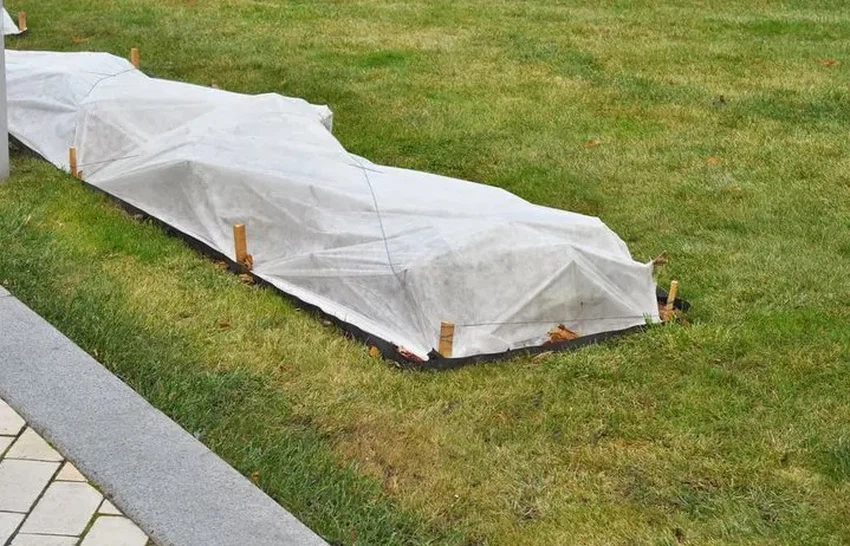
6. Rolling special trees :
Young trees, between 1 and 4 years old, may be more sensitive to frost injury, which may kill them outright, and the buds and blossoms of fruit trees exposed to frost in spring will be damaged and result in a reduced harvest for the rest of the season Citrus trees are tender and sensitive to frost In particular, it must be protected when temperatures drop below -2°C. To protect these trees from frost, trunks can be wrapped with towels, blankets, cardboard, rags, or insulation tubes, and burlap rolls or felted tree protectors can be used.
The winding is started from the base of the trunk, making sure that the layers overlap during the winding, and continue to wrap in this way until reaching the lower branches of the tree, then the cover is fixed to the tree using some threads or a tape resistant to weathering, and if the drop in temperatures continues for a long time, A layer of plastic wrap can be added over this wrap for additional frost protection.
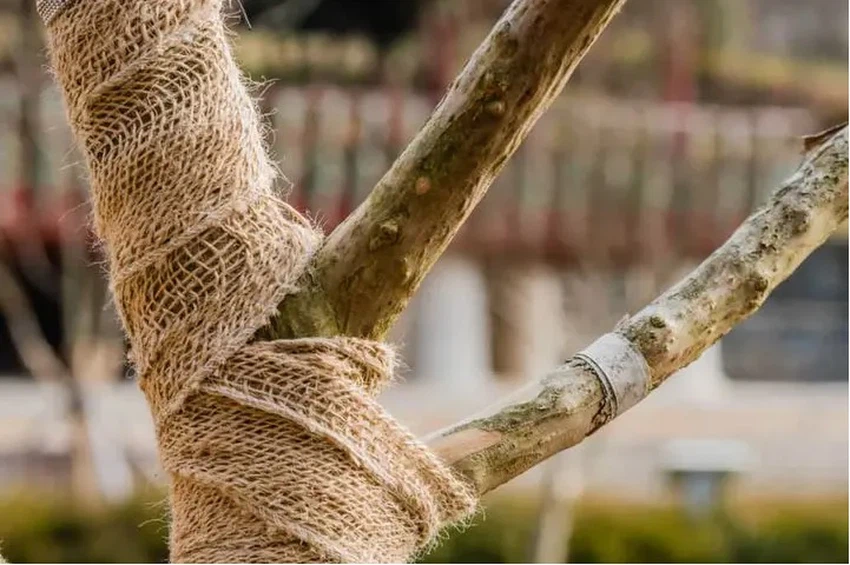
7. To keep the air moving :
When frost threatens large tracts of farmland, farmers use certain methods to simulate the movement of the winds. One such device is a large fan in a chimney that pulls cold air up and away while drawing warmer air to the ground. Another method is to commission a number of helicopters that fly At a low altitude fly over crops to keep air flowing.
The concept of air movement to ward off frost can be used on a much smaller scale, where an electric fan (when there is no rain) can be used to create an artificial breeze on small spaces on quiet nights, or a powerful blower designed for outdoor use can be used, when the fans are placed in place Indoor to ensure that warm air is drawn in, trying to locate it so that the breeze moves over all the plants in the plot.
What do you do after frost?
Plants appear damaged after frost when leaves and twigs turn black or brown, then wait until the weather is warmer and the danger of frost has passed before pruning, as dead branches and branches provide a little protection as well, so you can wait a little while until new growth appears before Damaged leaves are cut off.

How to make the farm or home garden more frost-resistant
You can save yourself the panic and heartbreak of losing flowers, trees and crops due to sudden frost by planning to make your farm or garden more frost-resistant, through the following tips:
- Focus on growing native plants that are specific to an area. The plants that are native to an area are better adapted to the temperature fluctuations in which they usually occur.
- When planning plantings, avoid planting tender plants that are rapidly affected by frost in low areas where frost forms more, due to the rise of warmer air and the diving of cooler air, plants that are sensitive to frost should be planted in higher ground.
- Cultivation of plant species that are more resistant to frost in areas where repeated frost is expected. There are many cold vegetables that often taste sweeter when touched by some frost, including:
- Root vegetables : such as carrots, potatoes, beets, parsnips, turnips, onions, garlic and radishes.
- Cruciferous vegetables : such as broccoli, cauliflower, cabbage, Chinese cabbage, and green cabbage.
- Leafy vegetables : such as spinach, lettuce, watercress.
How do winter clothes keep us warm?
Is it better to wear several layers of thin clothing or one thick layer?
Arabia Weather App
Download the app to receive weather notifications and more..



